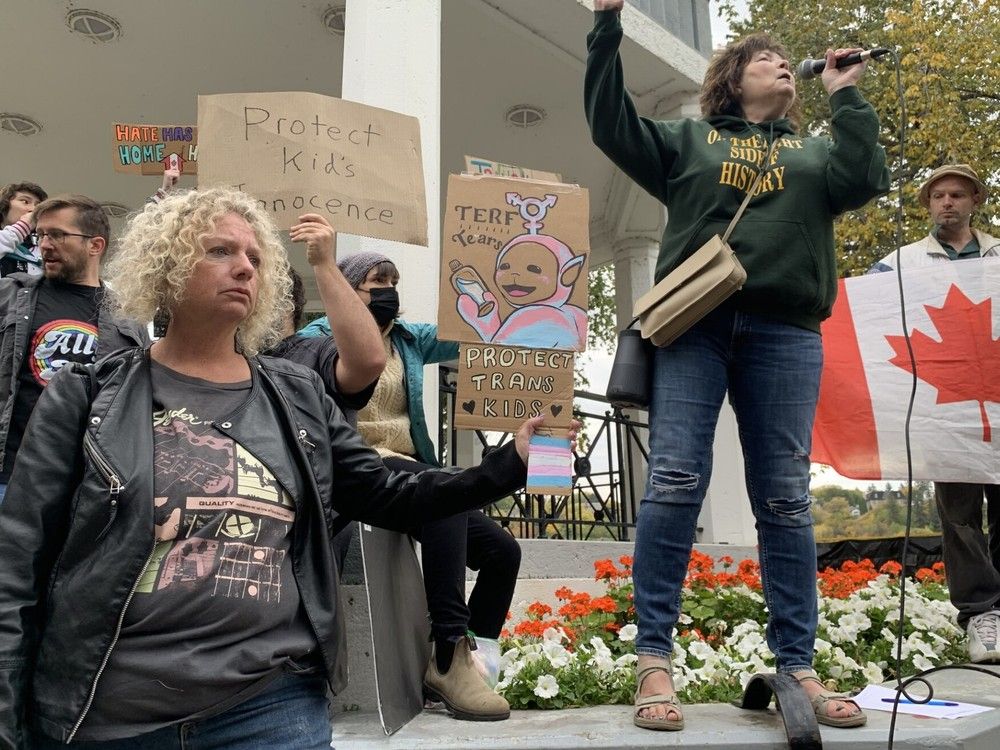Following a jump in the U.S. Treasury yields, the Secured Overnight Financing Rate (SOFR) swap spreads have widened, signaling a “serious liquidity” issue, according to Ark Invest’s Cathie Wood .
Experts believe that only the government and the Federal Reserve’s intervention would be able to contain this crisis. What Happened: SOFR is a benchmark interest rate that reflects the cost of borrowing cash overnight, and it is used as a reference rate for various financial transactions. On the other hand, the SOFR swap spread is the difference between the fixed rate in a SOFR-based interest rate swap and the yield on a government bond of the same maturity.

This surge in SOFR swap spread is a result of the dramatic rise in the 10-year Treasury bond yields, which are up from a recent low of 3.87% on April 4, which was two days after the “Liberation Day,” to 4.44% at the time of writing.
According to Wood, a widening negative SOFR swap spread is sending a distress signal pointing to a potential crisis of liquidity in U.S. banks.
She argues that this crisis necessitates a geopolitical solution through a trade agreement, which she terms the “Mar-a-Lago Accord,” and a monetary policy solution through aggressive intervention by the Federal Reserve. She further underscores the severity of the situation by adding that there is “No more time to waste”. As Zerohedge notes, this swap spread is suggesting serious liquidity issues in the US banking system.
This crisis is calling out for some kind of Mar-a-Lago Accord on free trade, in tandem with serious support from the Fed? No more time to waste. https://t.co/5VXYqLJemJ Adding to this, Joseph Wang , the CIO at Monetary Macro said in an X post, “If the White House wants lower 10 year yields they need to speed up banking regulation reforms.
” Big tightening in SOFR swap spreads. If the White House wants lower 10 year yields they need to speed up banking regulation reforms. pic.
twitter.com/19PlN9cI4a See Also: Bear Markets Hit Harder And Last Longer During Recessions, Says Strategist Why It Matters: The surge in yields suggests that bond prices are falling amid an ongoing market correction. Simplistically, this indicates that investors, who traditionally prefer investing in bonds during a stock market crash, are liquidating their positions.
However, there is more at play here. After President Donald Trump levied 104% tariff duties on China after the latter’s retaliation, Ed Yardeni of Yardeni Research suggests that “Fixed-income investors may be starting to worry that the Chinese and other foreigners might start selling their U.S.
Treasuries.” Moreover, the credit markets are also starting to show signs of stress as the yield spread between the high-yield corporate bond composite and the 10-year Treasury bond is widening rapidly. According to the data shared by Yardeni, the high-yield corporate spread stood at 407 basis points as of April 7, indicating reduced investor confidence, economic slowdown, or recession fears.
Consequently, ETFs that invest in high-yield corporate bonds and in senior bank loans are starting to plunge. The iShares iBoxx $ High Yield Corporate Bond ETF HYG and Invesco Senior Loan ETF BKLN are down 3.64% and 2.
75%, respectively, over the last five days. “The good news is that the Fed Put will probably make a quick comeback if this happens,” said Yardeni. Additionally, highlighting his concerns about rising yields, economist Peter Schiff said, “Without an emergency rate cut tomorrow morning and the announcement of a massive QE program, tomorrow could be a 1987-style stock market crash.
” As I warned earlier, the Treasury market is crashing. The yield on the 10-year just hit 4.5%, and the yield on the 30-year just hit 5%.
Without an emergency rate cut tomorrow morning and the announcement of a massive QE program, tomorrow could be a 1987-style stock market crash. Price Action: As of Tuesday’s close, the Nasdaq 100 index was in bear market territory, down 23.10% from its previous record of 22,222.
61 points. S&P 500 was 18.95% lower from its latest Feb.
19 high of 6,147.43 points. Whereas, Dow Jones was 16.
48% lower than its 52-week high of 45,073.63 points. The yield on the two-year Treasury stood at 3.
77%, and the long-term 30-year bond yielded 4.92%. The SPDR S&P 500 ETF Trust SPY and Invesco QQQ Trust ETF QQQ , which track the S&P 500 index and Nasdaq 100 index, respectively, declined on Tuesday.
The SPY was down 1.57% to $496.48, while the QQQ advanced 1.
80% to $416.06, according to Benzinga Pro data. On Wednesday, the future of Dow was lower by 2.
32%, the S&P 500 future declined 2.58%, and the Nasdaq 100 was down 2.63%.
Read Next: Market Enters ‘Risk-Off’ Mode As Analyst Predicts This Signal Flashing Warnings Similar To 2020, 2008 Crisis Photo courtesy: Shutterstock Stock Score Locked: Want to See it? Benzinga Rankings give you vital metrics on any stock – anytime. © 2025 Benzinga.com.
Benzinga does not provide investment advice. All rights reserved..
Cathie Wood Points To 'Serious Liquidity Issues' As Overnight Borrowing Rate Spreads Widen On Spiking Treasury Yields: 'This Crisis Is Calling Out For Some Kind Of Mar-a-Lago Accord'

Following a jump in the U.S. Treasury yields, the Secured Overnight Financing Rate (SOFR) swap spreads have widened, signaling a “serious liquidity” issue, according to Ark Invest’s Cathie Wood. Experts believe that only the government and the Federal Reserve’s intervention would be able to contain this crisis.What Happened: SOFR is a benchmark interest rate that reflects the cost of borrowing cash overnight, and it is used as a reference rate for various financial transactions.On the other hand, the SOFR swap spread is the difference between the fixed rate in a SOFR-based interest rate swap and the yield on a government bond of the same maturity.This surge in SOFR swap spread is a result of the dramatic rise in the 10-year Treasury bond yields, which are up from a recent low of 3.87% on April 4, which was two days after the “Liberation Day,” to 4.44% at the time of writing.According to Wood, a widening negative SOFR swap spread is sending a distress signal pointing to a potential crisis of liquidity in U.S. banks.She argues that this crisis necessitates a geopolitical solution through a trade agreement, which she terms the “Mar-a-Lago Accord,” and a monetary policy solution through aggressive intervention by the Federal Reserve.She further underscores the severity of the situation by adding that there is “No more time to waste”.As Zerohedge notes, this swap spread is suggesting serious liquidity issues in the US banking system. This crisis is calling out for some kind ...Full story available on Benzinga.com















